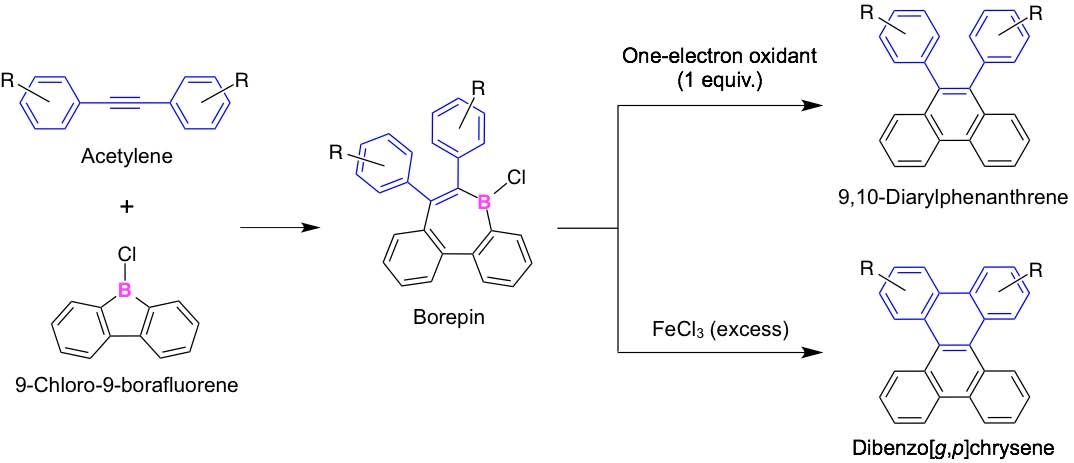ホウ素を介するアルキン挿入とC-Cカップリングの連続反応による拡張π共役分子の合成
Boron-mediated sequential alkyne insertion and C–C coupling reactions affording extended π-conjugated molecules
2016年9月1日 Nature Communications 7 : 12704 doi: 10.1038/ncomms12704

C-Cカップリング反応は有機変換の多様性を表す良い例であり、そうした結合形成反応は通常、有機遷移金属錯体によって媒介される。今回我々は、B-Cl結合を持つボラフルオレンが、アルキン挿入(1,2-カルボホウ素化)と脱ホウ素化/Csp2- Csp2カップリングの連続反応を媒介し、これにより芳香族化合物が得られることを示す。第一段階では、ボラフルオレンと各種アルキンを単に混ぜ合わせるだけで、これらの化合物間で反応が非常に効率よく進行し、ボレピン誘導体が生成する。第二段階はボレピン誘導体の一電子酸化によって起こり、結果としてフェナントレン骨格が形成される。第二段階で過剰量の酸化剤を用いると、その場でフェナントレン誘導体がさらに変換され、ジベンゾ[g,p]クリセン誘導体が生じる。今回報告した結果は、典型元素化学に関する理解を大幅に深めるばかりでなく、多種多様な拡張π共役系を構築する強力な合成手段をもたらすものである。
Corresponding Author
C–C bond coupling reactions illustrate the wealth of organic transformations, which are usually mediated by organotransition metal complexes. Here, we show that a borafluorene with a B–Cl moiety can mediate sequential alkyne insertion (1,2-carboboration) and deborylation/Csp2–Csp2 coupling reactions, leading to aromatic molecules. The first step, which affords a borepin derivative, proceeds very efficiently between the borafluorene and various alkynes by simply mixing these two components. The second step is triggered by a one-electron oxidation of the borepin derivative, which results in the formation of a phenanthrene framework. When an excess amount of oxidant is used in the second step, the phenanthrene derivatives can be further transformed in situ to afford dibenzo[g,p]chrysene derivatives. The results presented herein will substantially expand the understanding of main group chemistry and provide a powerful synthetic tool for the construction of a wide variety of extended π-conjugated systems.

